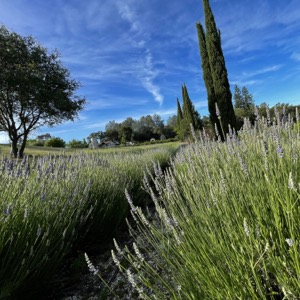A guide to caring for lavender plants
Lavender, with its ethereal purple blooms and intoxicating fragrance, is undoubtedly a favorite in many gardens. But to keep this beloved bush in its prime, regular pruning and care of lavender plants is essential. If you’ve ever been unsure about when or how to cut back your lavender, you’ve come to the right place. In this post, we’ll explore the ins and outs of caring for lavender to ensure it remains a vibrant feature in your garden for years to come.
Why Prune Lavender?
Pruning lavender does more than just maintain its shape. It stimulates new growth, ensures robust flowering, and prevents the plant from becoming woody at its base—a common occurrence with older lavender plants.
1. Best Time to Prune
The optimal time to prune lavender is late summer or early fall, after the bloom season. However, it’s essential to ensure you do this well before the first frosts to give your plant ample time to heal before the colder months.
2. Tools You’ll Need
- Sharp, clean pruning shears.
- Gloves (lavender can sometimes cause skin irritations to sensitive individuals).
- A small rake or hand brush.
3. How to Prune Lavender: Step-by-Step
- Begin with Deadheading As the flowering season progresses, regularly remove spent flower stalks. This encourages the plant to produce more blooms.
- Shape Your Plant: Aim for a rounded mound shape. This ensures good airflow and an attractive appearance.
- Cut Above the Wood While you want to trim back your lavender, avoid cutting into the old, woody part of the plant. Always leave some green, as lavender doesn’t always regrow from old wood.
- Don’t Go Too Short When pruning, cut approximately one-third to half of the plant’s height, ensuring you leave some green foliage.
- Clear the Area Once you’ve pruned your lavender, use your rake or hand brush to clear away cuttings from the base of the plant. This will ensure good air circulation and reduce the risk of mold or pests.
4. Annual Maintenance
For the best results, make pruning lavender an annual gardening task. It not only keeps the plant healthy but also ensures consistent growth and flowering every year.
5. Consider the Variety
Different types of lavender have slightly different pruning needs. While English lavender (Lavandula angustifolia) benefits from regular pruning, other varieties, like French lavender (Lavandula stoechas), may require more frequent trims. Always take the specific needs of your lavender variety into account.
In Conclusion
Pruning lavender might seem intimidating at first, but with these easy steps, you’ll find it becomes a rewarding routine. Remember, pruning not only ensures a beautiful appearance but also promotes the overall health of your lavender bushes.
For more practical gardening advice and how-to guides, subscribe to our blog and share this post with your fellow green thumbs.
Recent Posts

The Power of Mounding: An Essential Gardening Technique for Healthy Plants

The Ultimate Guide to Philodendron Birkin – Care, Tips, and Benefits

Watering Plants – Indoor Edition

The Advantages of Built-Up Garden Beds: A Gardener’s Best Friend

The Secret Weapon for Lush Blooms: How to Create the Perfect Fertilizer Schedule












You must be logged in to post a comment.